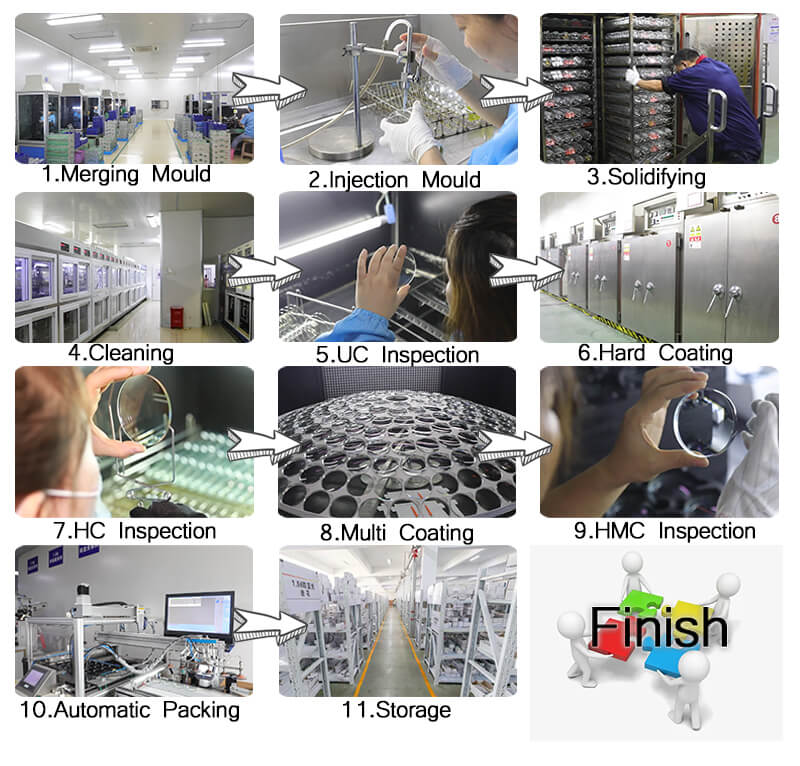1.59 PC Progressive Blue Cut HMC Optical lenses
Production Details
| Place of Origin: | Jiangsu | Brand Name: | BORIS |
| Model Number: | High Index Lens | Lenses Material: | PC |
| Vision Effect: | Progressive Lens | Coating Film: | HC/HMC/SHMC |
| Lenses Color: | White(indoor) | Coating Color: | Green/Blue |
| Index: | 1.59 | Specific Gravity: | 1.22 |
| Certification: | CE/ISO9001 | Abbe Value: | 32 |
| Diameter: | 75/70/65mm | Design: | Aspherical |

The first glass lens made of PC material was made in the United States in the early 1980s, and its characteristics are safe and beautiful. Safety is reflected in the ultra-high anti-breakage and 100% UV blocking, beauty is reflected in the thin, transparent lens, comfort is reflected in the light weight of the lens. Since the launch of the market, the manufacturers are very optimistic about the development prospects of PC lenses, they are in the lens design, manufacturing, research, constantly using new technology, new technology, PC lenses continue to develop toward the lightest, thinnest, hardest, the safest direction. With the rapid development of science and technology, high-tech, multi-functional and multi-purpose PC lenses are constantly introduced to meet the physiological, protection and decoration needs of consumers. What is worth mentioning most is a variety of aspheric PC lens products with polarizing or discoloration. Therefore, we have reason to believe that PC lenses will become one of the leading products in the glasses industry in the future.

The anti-blue light film in the lens is designed based on the scientific research of the professional optical lens research and development team. The high light rate ensures the real color and clear vision. It has the function of blue light filtering, which achieves a scientific and proper balance between blocking harmful blue light and retaining beneficial blue light.

Production Introduction
Progressive lenses are developed on the basis of dual focal length lenses. Progressive piece is in the transition of the upper and lower two focal lengths, the use of grinding technology, between the two focal lengths gradually transition, that is, the so-called progressive, can be said to be a progressive lens is a multi-focal length lens. In addition to not having to remove the glasses when looking at distant/near objects, the wearer's eye movement between upper and lower focal lengths is gradual. There is no fatigue of having to constantly adjust the eye's focus in the double-focal mode, nor is there a clear dividing line between the two focal lengths. The only drawback is that there are different levels of interference on both sides of the progressive film, which can cause the peripheral vision to swim.

Product Process





